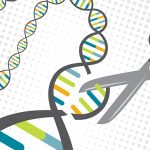 Earlier this year I covered some of the technologies that are helping support the software development process, with a particular focus upon AI tools.
Earlier this year I covered some of the technologies that are helping support the software development process, with a particular focus upon AI tools.
One of the more interesting is Oxford University spinout Diffblue, who have developed an AI-based solution to help improve the way code is tested. The company, which raised $22 million in Series A funding earlier this year, has developed the platform in partnership with Goldman Sachs, who have a stake in the startup.
The AI engine aims to understand precisely what the code is trying to achieve, and then tests the code to examine just how well it’s performing. The testing engine is currently available for Java and C and the company are working with a number of major banks and financial institutions, although there are plans to expand not only into new industries but also into new languages, including Python, Javascript and C#.
It’s an interesting approach, but whilst the application of AI to ensure software code is programmed in the right way is pretty cool, an even cooler tool has recently been developed by researchers at Microsoft.
Editing DNA
Whilst editing software incorrectly can have serious repercussions, editing DNA incorrectly can be fatal. The new tool utilizes AI to predict the accuracy of CRISPR, thus allowing researchers to avoid any potentially dangerous edits.
CRISPR is a gene editing tool that consists of two core components. The first cuts the protein whilst the second consists of guide RNA that directs you to the right part of the genome for editing. This guide RNA is 20 letters long, but the sequence of letters aren’t unique, so can exist in other parts of the genome, thus resulting in CRISPR cutting the wrong section.
This is known as off targeting and is arguably the biggest safety concern with CRISPR. It could have tragic consequences, for instance rather than turning off a cancer-causing gene, it could have the opposite effect.
The tool is designed to allow researchers to tap in the gene they want to edit, and receive back an estimate of the risks and potential side-effects of an off-target event. The makers believe this will allow researchers to better understand which genes are riskiest to edit and focus their efforts on safer genes.